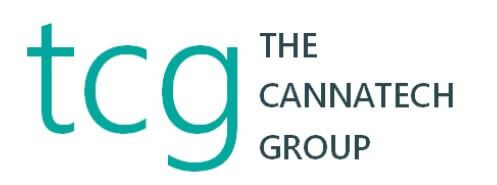In the recent years data trends have made huge advancements. When you think about data trends machine learning, AI, big data, and advance analytics may come to your mind. At the core of all of these phrases is data which will help your organization grown, help you make smarter business decisions, as well as more informed decision. We meet up with Eric Boone who shares with us the different levels of analytics and where the industry is right now.
Video Transcription
Harry Brelsford
Hey, everybody back with Eric Boone. Happy New Year, Eric.
Eric Boone
Happy New Year.
Harry Brelsford
All right. I always every time we do a podcast, I always ask, How do you pronounce the name of your company?
Eric Boone
Yeah, it’s Meristermatix. That that is a tricky one. But I, admittedly, I have a fairly limited target audience.
Harry Brelsford
Yeah. So well, what’s news? What’s what’s going on? Let’s
Eric Boone
talk. Yeah, well, I want to first of all, thank you, first and foremost, for having me back on the show. Always like to talk analytics in this context. And I kind of wanted to just take a moment today to sort of review where meristematic fits in the in the overall ecosystem of the burgeoning cannabis industry. We’re entering into a great period of time right now, where, you know, talk of national legalization is growing more and more, we’re seeing a growing, growing number of multi state operators now that are vertically integrating certain states or allowing companies to vertically integrate more and more, you’re seeing a lot of consolidation starting to take place in the industry, sir. still incredibly fragmented. And it will be that way for the foreseeable future, because it’s a great, it’s a great time to get in on the green rush. So you’re going to see more and more companies coming online. And that’s going to just, you know, make for more consolidation fodder, down the road. But it also really highlights the need for some advanced analytics. So if I can just take up a brief moment, I know, we don’t have a lot of time today. But I just like to sort of review the different levels of analytics and sort of where the industry is right now. You know, really where, where meristematic prides itself is on the fact that we’ve got a very old, very well trained engine, we’re actually the sister company of demand link out of Salem, Oregon. And we focus strictly on cannabis and hemp enterprises, but demand links been around since 2009. They’ve done a lot of analytics. For a lot of the largest greenhouses in the United States, in North America, a lot of big box retailers. So this is a this is a an analytics engine that has been around the block plenty of times. And we’re what it really is able to unleash because of its age and its sophistication, level of refinement, were able to really dial in in a very quick period of time, both predictive and prescriptive, analytic output. And so to put that in context, right now, a lot of what we see in our industry is descriptive. And that’s great. It’s, it’s powerful for making data driven decisions, it describes what’s going on in your business. So you’ve got up an example would be a graph, showing your sales over time. It allows your managers to identify potential trends that are happening. So if I’ve got a chart that’s telling me well, you know, my blue dream sales have slid by 7 to 9% over the last reporting period at the same time, my Bubba Kush sales are up by 5%. You know, the, the logical conclusion is, you know, maybe next time you want to order a little less blue dream a little more Bubba Kush. That is data that allows your managers to make an informed decision. But then we start getting into the next level, which is predictive analytics. And instead of just describing what’s going on, it’s predicting, it’s using what it described, it’s taking a look at those patterns. And extrapolating those patterns over time to predict what’s going to happen in the future making are very powerful. And I mean, we as humans do this, too, we call it forecasting, but this is this is obviously on a on a much more sophisticated level. It’s taking in a tremendous amount of data in order to generate much more specific output and this has some tremendous applications in the cannabis industry as well. You’re going to have you know, a better idea of what your your consumer purchasing behavior is going to be at the retail level for instance, well in advance of what that’s going to be at the at the production level. You know, your your growers can understand what the best cultivars are going to be to plant before they ever put a seed in the ground and having a future sight of what’s going on. Is really empowering particularly for a vertically integrated business essentially takes that guesswork, a lot of that guesswork that we made that conclusion. Well, let’s order more Bubba Kush next time. You know, that’s still a crapshoot and the predictive analytics help take some of that uncertainty So then we get to, I guess, you could say, the the Holy Grail, or maybe the Rosetta Stone of analytics. And that is prescriptive. And that’s where it’s taking your, what you predicted, and actually giving you quantifiable advice on what to do with that.You know, we’re deploying at this point, and it’s not something you can just, you know, buy off the shelf, this is something that needs to be refined over a considerable period of time, it’s highly refined algorithms, that provides you, you know, highly quantifiable business intelligence. A great example is that, you know, it might be better just to sort of give a quantifiable example, I, let’s make up, let’s make up a California company, because I don’t really want to use any hard and fast examples. But let’s say we’ve got a California operator allows vertical organization, they’ve got to greenhouses, to farms to outdoor farms that are capable of both full sun and light deprivation, they’ve got a processing lab, and let’s say, eight retail locations up and down the coast. So they’re capable of producing, you know, indoor bud, outdoor bud, light deprived bud, they can produce extracts and concentrates of all of the above, they’re capable of delivering a wide variety, variety of products to, you know, different consumers throughout the state. In, and maybe in an order to get to that point, they bought up to other stores, to expand their footprint. So they bought up to other companies, and that took him from two locations to eight. In order to really appreciate those economies of scale that they got by acquiring those other stores, you can deploy this engine, and it’s going to take a look at all of your sales data takes a look at everything that you’ve absorbed from your retail sales. But the great thing about the meristematic engine, is it’s also considering over 35,000 external factors, weather, traffic patterns, demographics, psychographics, financial, earning information, just anything across 35,000 different factors, essentially, the butterfly effect of analytics. And what we come back down to is a essentially, you know, a model that instead of having your managers try to figure out how much product to send, where it’s telling you, it’s telling you greenhouses, what to grow, because it understands what the consumer behavior is going to be in advance. It’s telling you exactly how much product to send to which location. And finally, how much to charge for, like the the price elasticity models are baked all into it. The end result is, you know, we’re able to start producing some of this output with as little as you know, two weeks of sales data. Oh, really? Yeah.
Harry Brelsford
Your training data is a fairly small footprints.
Eric Boone
Yeah, I mean, we’re, we’re assuming that, of course, that’s going to be more refined if we’ve got access to more historical data. But crap, the things been the things been through so many different permutations at this point that it starts producing actionable output, much more quickly than what we’re used to seeing in the marketplace. So I guess what I, the reason I kind of wanted to go through those all again, because we’re not really seeing a whole lot of the latter two. And you know, and the cannabis industry, we seem to be one that kind of prides ourselves on our analytics. And a lot of what we’re seeing is really in that descriptive output. And it’s very helpful. I mean, descriptive output shows you gives you a great bird’s eye view of the industry and the producers of the descriptive output are doing fantastic work. It’s highly accurate, and it is, it’s a great way for investors. To get a bird’s eye look at the industry. It’s a great way for larger managers to understand, perhaps future m&a strategies. But it we as an industry have failed to embrace at a high level exactly what you know, predictive and prescriptive analytics can unleash. So I’m sort of here you know, speaking from the top of the mountain saying, hey, you know, let’s have conversations reach out to I’m talking to those vertically integrated cannabis enterprises. Maersk telematics, is open and ready for business and we can produce, we’re ready to put our money where our mouth is. And, you know, it’s time for the industry to step up. We’re right on the cusp of legalization. And it’s time for us to start to put on our grown up pants and, and take our analytics to the next level. So
Harry Brelsford
no, yeah, absolutely. Absolutely. And you know, you’re you’re You’re talking to the right guy I’ve shared with you in prior podcast, I had the good fortune of doing an analytic startup and over by the Space Needle about five years ago, and predictive analytics, totally different realm. But I get it. Okay, I get it. And
Eric Boone
I want to step back a little bit because I may be presented this as a linear, a linear thing, like if you progress from this to this to this and it’s really that that sort of belies the more cyclical nature, as you know, of how these analytics work. And I see a lot of these these large cannabis enterprises that are they’re leaning a lot on their data departments, but they only have one of the three tools in their toolbox. And, and we offer these two other tools that I think really, really offer because there are certain times where you know, the descriptive really is it fits the bill. But in other times you just got to dive a little bit deeper down into it, and I haven’t seen a lot of it in the industry. So this is a I guess a bit of a call to action. To my surfing it’s in the in the burgeoning cannabis and hemp industries.
Harry Brelsford
Alright, well, we’ll look forward to an update next time. Thank you very much.
Eric Boone
Thank you, Harry.








